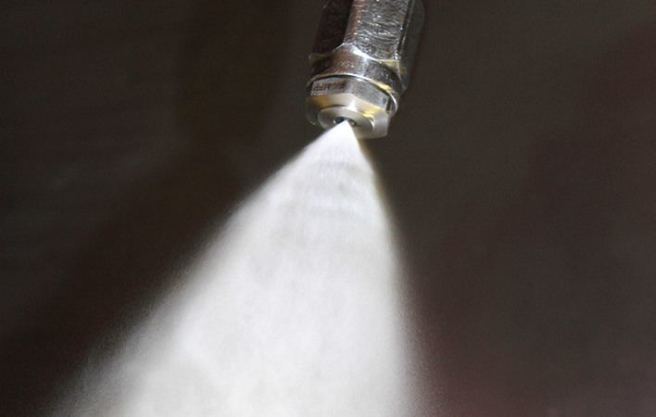One important advantage of spray drying is that the feedstock can be in virtually any form that can be pumped. Solutions, slurries, pastes, gels and suspensions can be successfully spray dried. The first step in the spray drying process is to prepare the feedstock for spraying by optimizing the temperature, concentration, viscosity or other characteristic.
Feed temperature
The temperature of the feedstock affects the viscosity and the transfer of heat from the drying air in the chamber to the droplets. Both the temperature of the feedstock and the temperature of the chamber air need to be considered when selecting nozzle seal materials.
Melting temperature
Some feedstock is solid at room temperature and must be melted in order to atomize them. Prilling or spray cooling involves forming pellets or crystals by spraying melted feedstock into a chamber through which cooling air is flowing.
Abrasion
The abrasiveness of the feedstock must be considered when selecting the material for the internal nozzle components. For most applications, tungsten carbide is the material of choice for the swirls and orifice discs. Tungsten carbide has excellent resistance to abrasion and good corrosion resistance for most feedstock.

Corrosion
For some feedstock, corrosive attack on the nozzle components is a greater problem than abrasion. For these cases, 316 stainless steel or Nitronic may be good choices.
Specific gravity
The specific gravity is the density of the feedstock relative to water. A specific gravity greater than 1.0 means that the feedstock is denser than water. Increasing the specific gravity reduces the flow through a nozzle. Converting your density units to g/ml will yield the specific gravity value, since water has a density of 1 g/ml.
Solids content
The solids content is the percent of the feedstock that is composed of solids. Most feedstock has about 50% solids, although the range is from about 20% to 70%. Increasing the solids content reduces the amount of moisture removed in the spray drying process. As the solids content increases, the feedstock becomes more difficult to pump and atomize.
Surface tension
Surface tension is the force acting on the surface of a liquid that tends to minimize its surface area. Reducing surface tension makes a feedstock easier to atomize.
Viscosity
Viscosity is the resistance to flow of fluids. The most commonly used unit is the centipoise. Increasing viscosity tends to increase droplet size. For some nozzle designs, increasing the viscosity tends to increase the flow rate.
